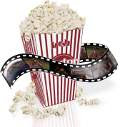Set in post Victorian England, this film portrays the life of illustrator and writer Beatrice Potter. The film starts off with numerous flashbacks to a talented young girl who paints animals in an outstanding way but then the switches focus to the social environment of the times.
Beatrice’s family were products of the wealth of the industrial revolution of the nineteenth century and had ambitions for social advancement. Beatrice however resisted family pressure to marry a person of ‘standing’ in society and finds herself at 32, a spinster with a very limited future. Taking hold of her circumstance she determines to make the most of her life by taking her portfolio to a publisher in order to launch herself as an author and make her contribution to society. The publishing house run by two brothers at first (through one brother) rejects her ideas as being unmarketable, however the other brother sees an opportunity to solve a family requirement to encourage their younger brother (Norman) to enter the business. This is a pivotal point in the film since, providentially, Beatrice is both given the opportunity to enter the market with her illustrated books and meet the man whom she will fall in love with. Her books become best sellers and she achieves significant wealth and recognition.
Beatrice’s parents at first resist a marriage to Norman but eventually relent stipulating a period of waiting. Tragically Norman dies during the waiting period and Beatrice suffers a long period of grief. There is a stark contrast between elation at the coming marriage and the untimely death of Norman.
In the closing phase of the film, Beatrice moves to the Lake District of England where her family spent their holidays each summer and there she meets a childhood friend (William). They share a common purpose to preserve the national heritage of the Lake District, initially by purchasing the now famous ‘Hill Top’ farm. The film closes as she marries William at the age of forty.
This film illustrates some of the social biases, often irrational, in an age that birthed movements such as the Suffragettes, as a nation moved out of Victorian conservatism into truth and reality. The photography in the film is on occasion quite spectacular and the character portrayal excellent, especially from Renee Zellweger. Well worth viewing, Nine out of ten.
Rating: 9/10
Tuesday, January 30, 2007
Subscribe to:
Post Comments (Atom)

No comments:
Post a Comment